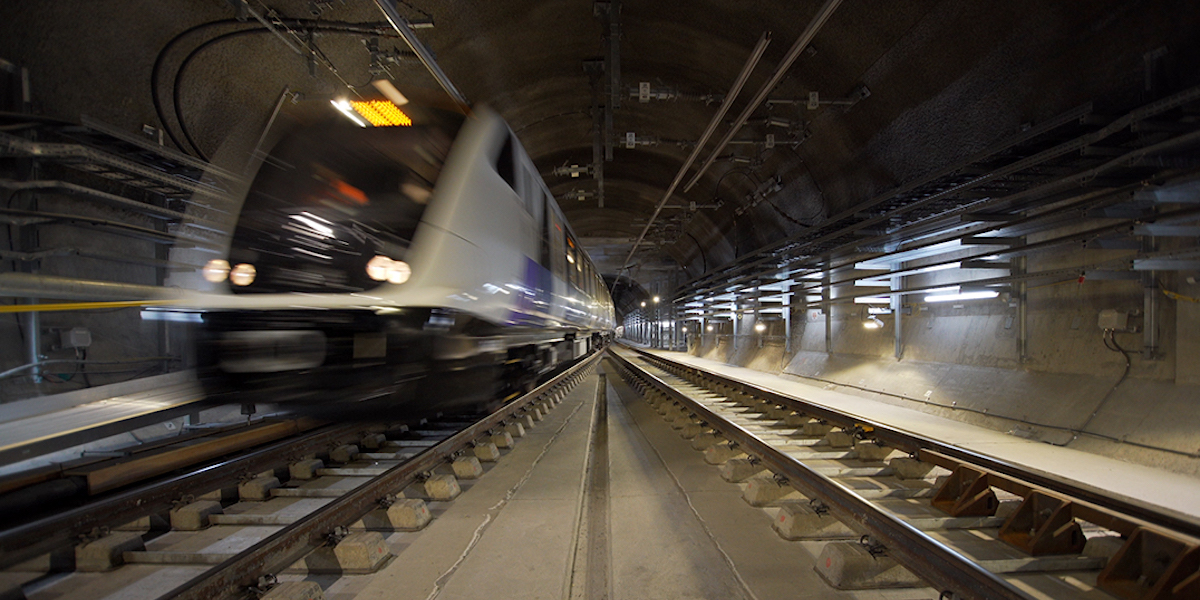Despite a four year delay, the latest research by London lettings and estate agent, Benham and Reeves, has found that house prices surrounding Crossrail stations are still largely outperforming the wider areas in which they are located.
Last week, a ‘crucial milestone’ was reached as testing began on the long-awaited Crossrail route and the research by Benham and Reeves shows that, on average, property values in postcodes home to a Crossrail station sit 17% higher than the wider area.
Current Crossrail Property Price Premiums
Current property prices in postcodes due to benefit from a Crossrail station currently average £572,686, 17% higher compared to the average £490,429 across the wider districts in which they are found.
Tottenham Court Road is home to the highest Crossrail boost, with property prices in the W1 postcode currently averaging just shy of £2m, 140% higher than the wider borough of Camden (£822,936).
Bond Street (97%), Liverpool Street (55%), Twyford (40%), Gidea Park (32%), Iver (27%), Whitechapel (26%), West Ealing (22%), Shenfield (21%) and Canary Wharf (17%) are also home to some of the largest Crossrail property price premiums.
Crossrail Property Price Growth
Since Crossrail was approved in July 2008, property values in postcodes due to benefit from a station have climbed by 65% on average, far higher than the 39% seen across the UK. Crossrail stations within London have seen prices increase at an even greater rate, up 71% since 2008, although this rate of growth sits at the same level as London as a whole.
Tottenham Court Road and Bond Street have, again, seen the biggest boost with values in the W1 postcode climbing by 172%. Woolwich has also seen a notable jump with property prices up 122%, along with West Ealing (97%), Twyford (92%) and Maryland and Stratford (89%).
However, the research by Benham and Reeves shows that in addition to Crossrail station house prices sitting 17% higher than their wider areas today, this premium has also increased from 14% since it was first approved.
This boost in Crossrail house prices is even more substantial across some stations. In 2008, property prices in Tottenham Court Road’s W1 postcode were 39% higher than the wider area of Camden. However, today this premium sits at 140%, a 101% increase in the price premium paid for Crossrail properties.
READ NOW: Why you should invest in the Algarve’s property market
Crossrail also seems to be reversing negative price trends found around stations due to benefit. In Woolwich, for example, the average house price in the Crossrail postcode of SE18 was £181,022 in 2008, -23% lower than the wider borough of Greenwich (£233,729). Today, the average price in the postcode has increased to £401,326 and while it remains lower than the average for Greenwich as a whole (£421,221), this gap has closed to just -5%.
In other areas, Crossrail house prices have seen a complete turnaround. In 2008, the average property price in the IG postcode (£254,328), home to the Goodmayes and Seven Kings Crossrail stations, came in -6% below the wider borough of Redbridge (£271,019).
Today, the postcode is home to an average property price of £478,831, 5% higher than the average of £456,098 seen across Redbridge as a whole – an 11% swing on the premium paid for homes close to the Crossrail station.
Director of Benham and Reeves, Marc von Grundherr, commented: “Despite the ongoing and extensive delays, Crossrail remains one of the most eagerly anticipated developments to the London landscape in recent times. It’s set to transform the way we traverse the capital by train and will substantially shorten journey times for both Londoners, and those commuting from further afield.
So it’s hardly surprising that despite its late arrival, many areas due to benefit continue to see a substantial rate of property price growth, with homes surrounding a Crossrail station also commanding a notable premium when compared to the wider area in which they are located.
This strong market performance also comes against a backdrop of Covid uncertainty which has seen London underperform to some extent when compared to other regions of the UK. However, the capital has started to regain momentum with many now returning to work as lockdown restrictions are eased and so we expect to see house prices along the Crossrail route continue to climb as its launch approaches.”







